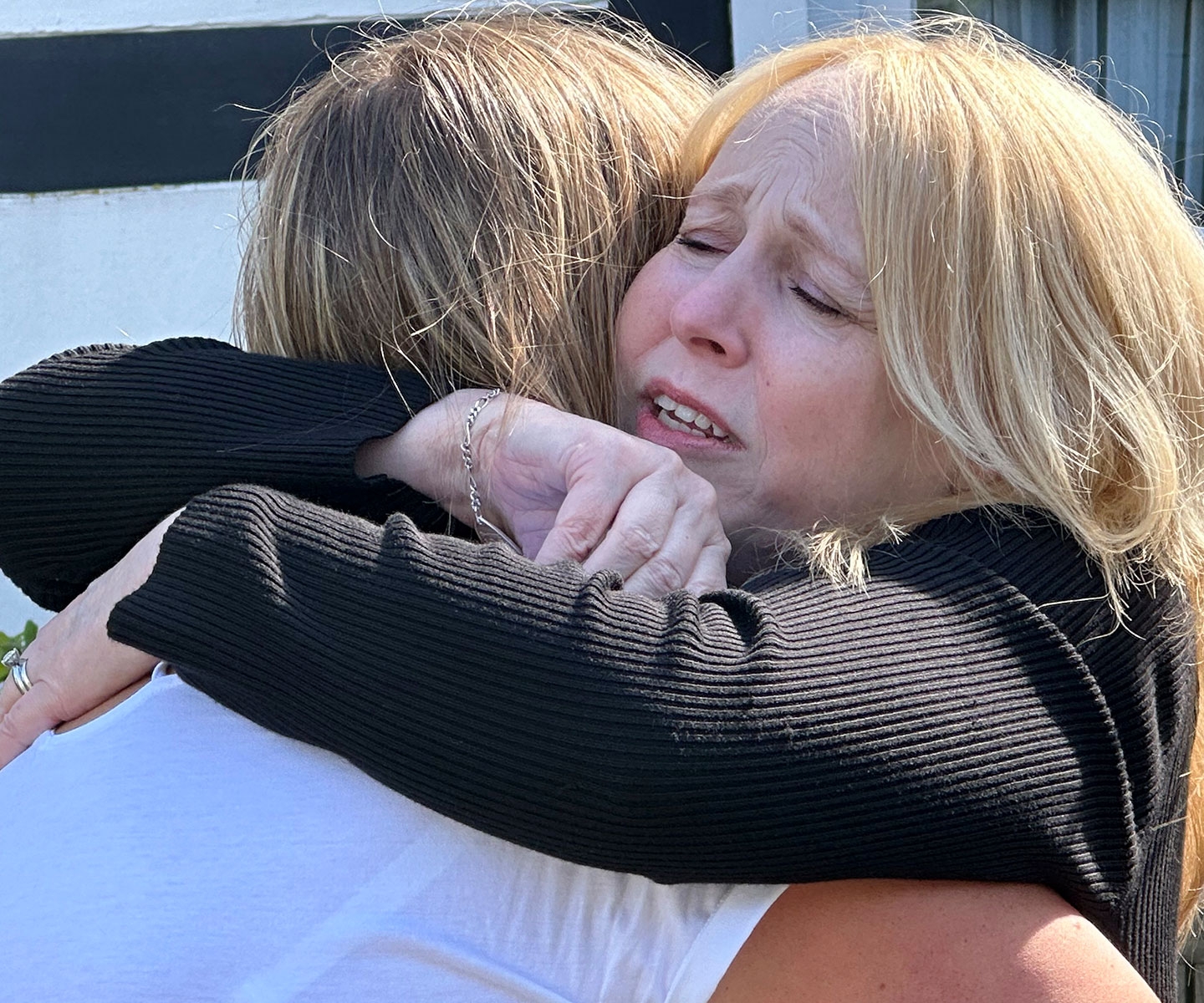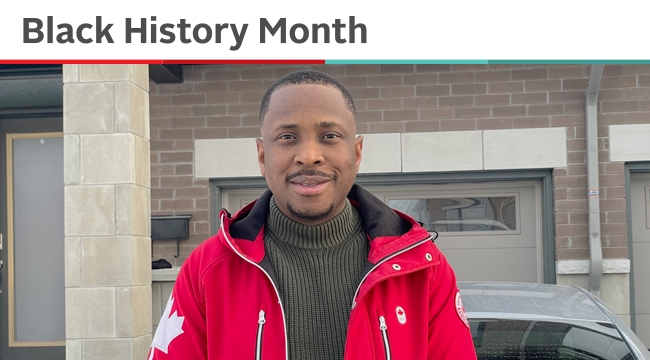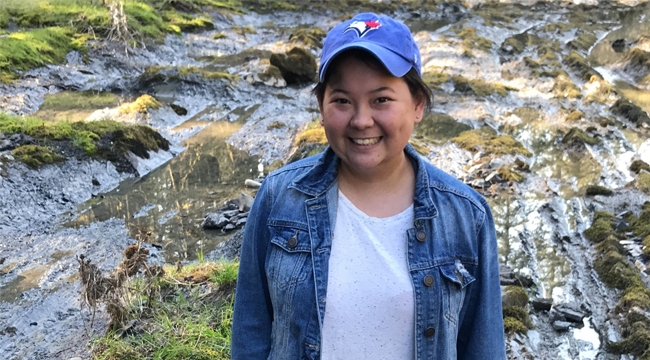‘I had butterflies in my stomach and my heart was pounding’

Jahnis Gillan will never forget her first meeting with the stem cell donor who saved her life
Nearly five years to the day after a stem cell transplant cured her leukemia, Jahnis Gillan embraced her stem cell donor for the first time.
“I had butterflies in my stomach and my heart was pounding,” recalls Jahnis, who lives in Toronto, Ont. “Just the emotion that overcame me, meeting the person who saved my life, was the most incredible experience.”
That amazing moment was a long time coming. In fact, you could trace it all the way back to 2009. That’s the year Yvonne Schöne, who lives in a small village called Belecke in western Germany, registered to become a stem cell donor. Like many who register, Yvonne waited years to be matched to a patient. But when asked, she didn’t hesitate to donate, even though she knew almost nothing about the person she would help.
Today, she knows a whole lot more. While many recipients and/or their donors choose not to have contact (or can’t, because it’s not permitted by the stem cell registry in the donor’s country), Jahnis and Yvonne both wanted to meet. They started by exchanging anonymous letters.
“I sat down at the cottage table, and I remember writing out this very thoughtful letter to her about how I was feeling,” says Jahnis. “I didn't know who it was, whether it was a man or a woman or where they were, how old they were, nothing about them. I was just thanking them for saving my life, and telling them about our life.”
Yvonne remembers receiving that letter just before Christmas.
“It was so emotional,” Yvonne recalls in an email. “My best Christmas present was reading that the donation was well-received.”

Then two years after the transplant, Jahnis and Yvonne were able to have direct contact. Since then, their rolling conversation over WhatsApp, email and video chat hasn’t stopped. They check in almost every day.
“We call each other sisters,” Jahnis says. “The sisters we never had.”
When Jahnis was finally able to visit Germany this summer with her husband, Jeff Lazenby, “we fell into each other's arms,” Yvonne writes. “As I write this, tears come to my eyes again.”
The day after that emotional meeting, Aug. 2, was Jahnis’s transplant anniversary. Yvonne and her family hosted a garden party where they celebrated together.
The search for a stem cell match begins
Jahnis was utterly shocked to be diagnosed with leukemia in 2018. She had thought her flu-like symptoms could be malaria, as she had recently celebrated her 50th birthday with a trip to three African countries where the disease is endemic.
But tests quickly revealed cancer, and a very aggressive one at that.
“My whole world changed that day,” Jahnis says.

Doctors gave her just weeks to live without immediate chemotherapy. And she learned that as soon as the treatment put her cancer in remission, she’d need a stem cell transplant to be able to survive long term. Very quickly, the conversation turned to possible stem cell donors.
“They asked me ‘Do you have any siblings? Do you have any children?’” Jahnis recalls. Her heart sank as she responded “no.”
In reality, only a minority of patients have a stem cell match within their own family. The best chance is with a sibling, and even then, the odds are just one in four. So as happens with most patients, Jahnis’s transplant team turned to Canadian Blood Services Stem Cell Registry. Our registry keeps a database of willing volunteer donors, as well as connections with similar registries around the world — like the one Yvonne joined in Germany — to facilitate the best matches for patients.
If you’re between the ages of 17 and 35, you can become part of this lifesaving global network. The free registration kit is delivered by mail, and completing it is easy. After joining, you could be called to donate a maximum of two times, anytime before your 60th birthday.
The path to stem cell transplant with bone marrow
The path to transplant was somewhat challenging for both Jahnis and Yvonne, for different reasons. Serious health complications on Jahnis’s side delayed transplant by a couple of weeks. That meant Yvonne’s stem cell donation — for which she needed to travel about 150 kilometres to the city of Cologne — also had to be rescheduled.
“It was a fear of ‘will this person be able to move the date?’” remembers Jahnis. “And she kindly did. That was big for us.”
Also, for a particular reason related to Yvonne’s own health, she was recommended to donate stem cells through a surgical method. While about 80 per cent of donors give through a non-surgical procedure called “apheresis” which resembles the process for donating plasma (a blood component), Yvonne donated bone marrow, the spongy tissue in the centre of bones.
Bone marrow donation involves a physician using a hollow needle to withdraw liquid marrow from the back of the pelvic bones. The donor is under general anesthesia.
“I was ready for the surgery at around 7 a.m.,” Yvonne recalls. “Around 11 o’clock I was awake again in the room and fit. I was happy that I could help someone.”
Learn more about how stem cell donation works

Within two days, the bag of donated stem cells was across the Atlantic, hanging on an IV pole next to Jahnis in hospital. Overcome with gratitude for the unknown donor, “I just stared at it and cried,” says Jeff, Jahnis’s husband. “That’s the gift,” he remembers thinking. “That’s what’s going to get us through this.”
Yvonne’s journey also had moments that felt magical. The day before her donation, after going through some final medical tests in Cologne, she stopped at a pub for a bite to eat. She sat down at the only free table next to an elderly man.
“He told me about his life (he was a widower) and I told him about my upcoming bone marrow donation. We sat together for a good two hours,” recalls Yvonne. The gentleman was so excited by her effort to help a stranger that he paid her bill. “That also moved me very much.”

A bone marrow donation makes all the difference
Jahnis had a difficult recovery after transplant, including a serious complication called graft-versus-host disease. She remembers getting a lot of transfusions of blood and platelets, as well as many walks around the hospital with Jeff.
“I had my pole with my IV and we would walk around, and we would picture someday being able to walk in the sand in Aruba, which is one of the places we love to go,” says Jahnis.

Thanks to Yvonne (as well as those blood and platelet donors) the couple has indeed made it back to Aruba. But they’re just as grateful for life’s simple pleasures: walks to get ice cream, date nights and time with family. Jahnis’s father was able to enjoy five more years with his only child before he passed away.
“Her parents were able to see her getting back to good health,” says Jeff. “I think it really meant a lot to both of them. All of our family and friends are so, so happy about that.”
“I don't take things for granted at all anymore,” adds Jahnis. “So we're back to our normal life, but even better.”

A diverse stem cell donor base can save more lives
Knowing a matching stem cell donor was available gave Jahnis and Jeff so much hope during Jahnis’s cancer treatment. To wait for a match “would be terrifying,” says Jahnis.
Yet that’s the reality for many patients. Matches are made according to DNA markers called Human Leukocye Antigens (HLA), which are easily detected in the small sample of cells provided by those who join the stem cell registry. Because these markers are inherited, a patient’s best chance of a matching donor (outside their own family) may lie with others who share their ethnic background. Unfortunately, because most prospective donors worldwide are of European descent, it is often more difficult to find matches for patients of other ethnicities.
Currently, people of Indigenous, Asian, South Asian, Hispanic, Black, and mixed-race backgrounds make up only about a third of registrants in Canadian Blood Services Stem Cell Registry, so patients of these backgrounds may struggle more.
“We know people who were on this journey with us at the same hospital, who didn’t find a match,” says Jeff. “It’s devastating.”
Learn more about why we need a diverse donor base
In fact, not long after she was matched with Jahnis, Yvonne read about a patient who had died without a stem cell match — a poignant reminder of the importance of her own commitment to donate. Now, she and Jahnis hope sharing their happier ending can inspire more potential donors, from as many backgrounds as possible.
“We’re dedicated to doing that and giving back,” says Jahnis.



